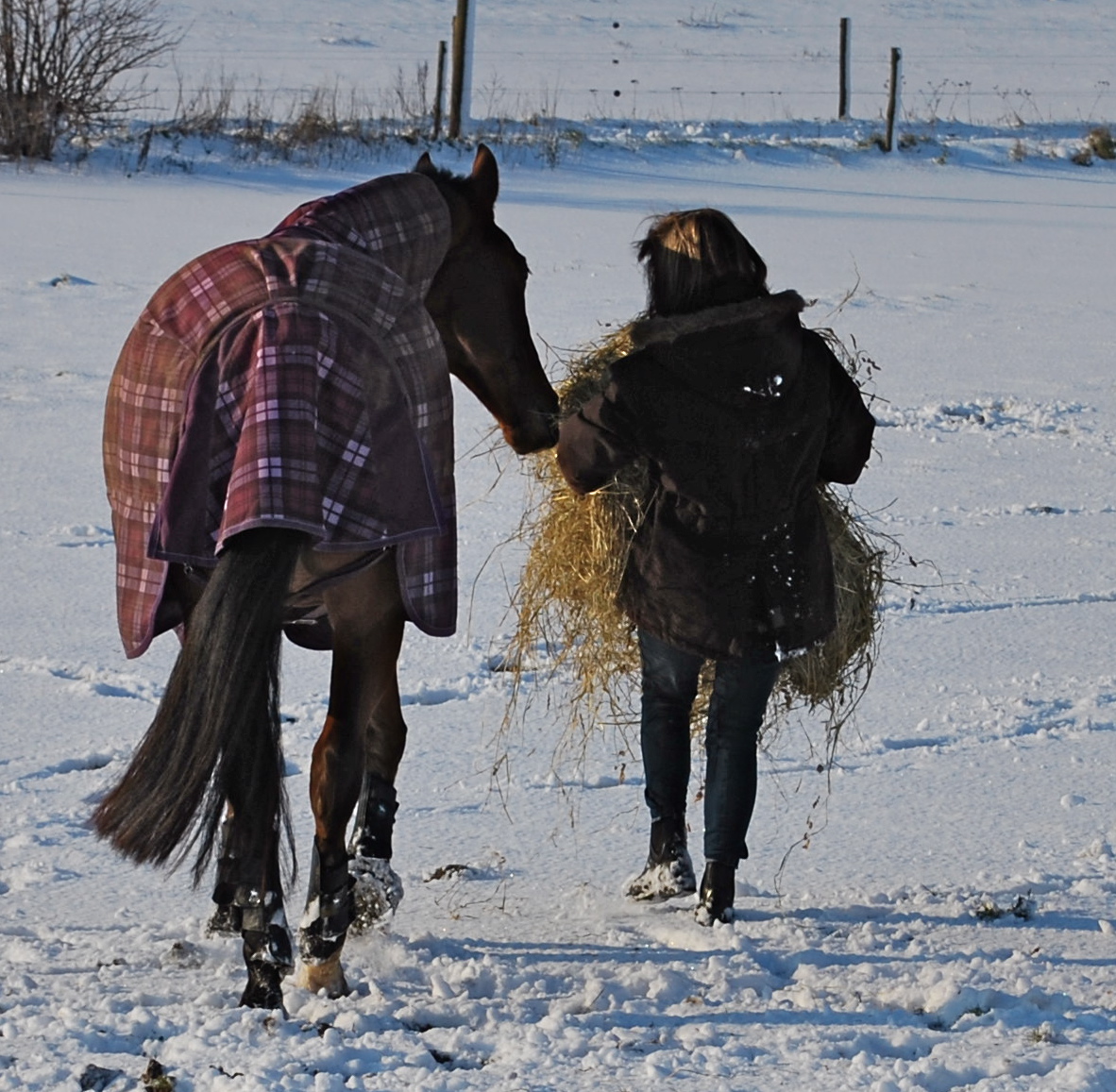Our Head of Nutrition, Dr. Stephanie Wood leads our Novemberblog - focussing on the importance of fibre in your horse's diet, especially through the colder months.
We often hear that fibre is an important part of the horse’s diet, but what is fibre and why is it so important?
Fibre is the term used to describe the cell wall of plant cells. It protects the inner contents of the plant cell and provides structure to the plant, with stems containing more cell wall than leaves. As plants mature, the proportion of cell wall in each cell increases, and the proportion of stem to leaf also increases. The overall effect is that mature plants contain more fibre than younger plants.
The fibre within plants has a complex structure that must be fermented by microbes to break it down. When horses eat plants, whether this is in the form of grass, hay, chaff or cereal grains, the fibrous part of the plant must be fermented in the horse's hindgut by the trillions of microbes that live there. These microbes are what enable all herbivore animals to survive off a plant only diet. The fibre therefore serves as a food source for the microbes, which in turn produce volatile fatty acids (VFAs), B vitamins, vitamin K and heat which are all beneficial to the horse. VFAs are absorbed and used as an energy source, the vitamins are also absorbed and used for multiple purposes in the body, and the heat contributes to keeping the horse warm, making it especially beneficial in colder weather.
Fibre also requires lots of chewing to break it down into small enough particles to swallow. As horses only produce saliva when they chew, the feeding of fibre also supports gastric health as saliva neutralises acids produced in the horse's stomach, helping to keep the gastric environment healthy. Limiting fibre intake is known to negatively affect gastric health.
So although it's easy to think of hay or chaff as just something to bulk out the feed, fibre is vital for keeping your horse healthy, particularly their digestive system. It also provides a large amount of energy, which is how horses and ponies are able to meet their energy requirements, and often exceed them, on a forage or grass only diet. When the amount of fibre in the diet decreases, digestive health is compromised.
Ensuring there is enough fibre in the diet
Grass, hay, haylage, chaff and straw are all obvious sources of fibre you can feed your horse, although the amount of fibre in these sources will vary, with grass having the least, haylage, hay and chaff having similar levels, and straw having the most. Feeding a variety of fibre sources not only keeps your horse interested in their feeds but also encourages diversity in the hindgut microbial populations. Such diversity is beneficial as it promotes a stable hindgut, helping to reduce digestive disturbance.
What may not be obvious is that concentrate feeds also include multiple fibre sources. Sugar beet, grass meal and oat husks are just three fibre sources commonly used in Dodson & Horrell feeds that contribute to the overall fibre intake and support digestive health.
How much fibre should I be feeding?
Recommendations are to feed your horse a minimum of 1.5% of their body weight each day as fibre, on a dry matter basis. This sounds complicated. What does it mean in practical terms?
300kg pony example:
- A 300kg pony should eat a minimum of 4.5kg of fibre per day as dry matter
- If feeding hay that has a dry matter content of 86%, you should give 5.3kg of hay per day
- You need to feed more actual hay to account for the 14% water in the hay as water doesn’t contain any nutrients and dilutes those in the dry matter portion
- Feeding more compensates for that dilution
Calculations
300kg / 100 x 1.5 = 4.5kg of hay as DM
4.5 / 0.86 = 5.3kg of actual hay to account for water content of hay
550kg horse example:
- A 550kg horse should eat a minimum of 8.3kg of fibre per day as dry matter
- If feeding haylage that has a dry matter content of 70%, you should give 11.8kg of haylage per day
- As haylage contains more water the amount of actual haylage is much higher than the dry matter amount
Calculations
550kg / 100 x 1.5 = 8.3kg of haylage as DM
8.3 / 0.7 = 11.8kg of actual haylage



